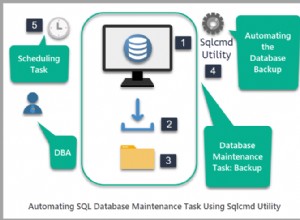Es ist ganz einfach, sehen Sie sich einfach das Beispiel an.
--meine Datenbanken
postgres=# \l
List of databases
Name | Owner | Encoding | Collate | Ctype | Access privileges
-----------+----------+----------+---------+-------+---------------------------
francs | postgres | UTF8 | C | C | =Tc/postgres +
| | | | | postgres=CTc/postgres +
| | | | | francs=C*T*c*/postgres +
| | | | | select_only=c/francs
postgres | postgres | UTF8 | C | C |
source_db | postgres | UTF8 | C | C | =Tc/postgres +
| | | | | postgres=CTc/postgres +
| | | | | source_db=C*T*c*/postgres
template0 | postgres | UTF8 | C | C | =c/postgres +
| | | | | postgres=CTc/postgres
template1 | postgres | UTF8 | C | C | =c/postgres +
| | | | | postgres=CTc/postgres
(5 rows)
--Wechsel auf DB-Franken als Rolle Franken
postgres=# \c francs francs
You are now connected to database "francs" as user "francs".
--Wechseln Sie zu DB Postgres als Rolle Postgres
francs=> \c postgres postgres
You are now connected to database "postgres" as user "postgres".
postgres=#
--Verbindung zur Datenbank trennen
postgres=# \q




